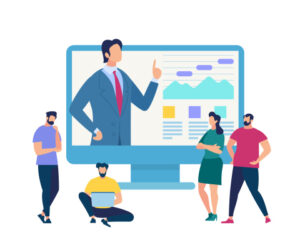| Image Credit: Gabrielle Henderson/Unsplash
Technical document translation can be described as the pinnacle of translation work. Technical documentation is created by a manufacturer or a supplier to make it easier for the end-user to understand the working and architecture of a product or technology they use. When you buy a technology product, be it consumer electronics, appliances, or technology products, these devices often ship with a user manual, warranty details, and another manual called a technical document.
A technical document will offer details that explain which nuts or bolts to be used or safety instructions like earthing. With the right to repair gaining legislative grounds around the world, a technical document is becoming an even more important material in a package. A technical document will soon become the gateway to you fixing your iPhone at home.
These are the women in science of the Amsterdam startup ecosystem.
With technical documentation becoming such an important tool, it is important that they are not only accurate but also well translated. If a technical document is prepared by an engineer in English, the Spanish or Mandarin version of it should be equally accurate and able to explain the concept properly. This is where technical document translation services like the one offered by Circle Translations come into play.
These services ensure that the technical translator not only has a thorough background in both the target and source languages, but also a comprehensive understanding of the subject matter. They are often skilled in understanding the terminologies and able to explain the context easily. With that in mind, here is a look at some of the common mistakes found in technical document translation.
Translating the document word for word
This is one of the common mistakes found in technical document translation. A translator might attempt to do a literal word for word translation, which is also referred to as formal equivalence. This kind of translation will lead to a document that matches the source but fails to portray the right context of the document.
A word for word technical document translation could lead to a final output where the meaning of the resulting product is different from the source product. This could lead to damaged equipment, system failure, or other harm.
Ignoring cultural nuance
Another common mistake seen with a technical document translation as well as translation of any other document is ignoring cultural nuances. Each country will have its own way of expressing something. An expression commonly used in the US may be relevant in some member states of Europe but not all.
Hence it is recommended to use a translator who is also a native speaker of the target language. A native translator will know the language better than a translator who speaks the target language and can thus understand the cultural nuance and interpret it in a way that is understandable to other native speakers. This is why companies now dedicate a chunk of their marketing budget to translation and subtitle services.
Translators with no technical expertise
While native speakers can fix the gap in cultural nuance, they may not be the right for the job if they don’t have technical expertise. With a technical document, it is important that the translator knows the technical fundamentals like construction drawings, instruction manuals, product specifications, and others.
These translators should be able to understand the minutiae of these technical terms and be able to interpret them well in the target language. While you can get a document translated even with Google Translate or any AI translation tool, a native speaker with technical expertise can translate the document in such a way that it is understandable across the spectrum of people it is intended to reach.
Defining the target audience
As mentioned throughout this article, the technical translation is done in order to serve an audience, also referred to as the target audience. If a technical document is addressed to “everyone” then its impact will be limited. However, you can define the target audience by explaining their language, age group, and even academic background.
This narrowing down the audience will help the translators to better conceptualise their translation. They can be creative when translating for children by adding humour or reference to local shows. For an older audience, they can jump straight to the point and make it simpler with steps. Thus, not defining the target audience becomes another common mistake.
No respect for dimensions
Another mistake commonly found with technical translations is a lack of respect for dimensions. A skilled translator would know what kind of metric system is used in the country where the final output is to be sent.
This skilled translator won’t translate weight in pounds to pounds if the target audience is in a country like India. The translator would know that India follows kilograms for weight and will translate the metrics accordingly. Similarly, a skilled translator will be mindful of metrics like a yard, a mile, a centimetre, an inch, and others while translating them.
Lack of images
One of the most common images used by companies offering guides to fix an iPhone is that of opening the pentalobe screw found at the bottom of the device. This image tells the user where the screw is and how it is different from a torque screw. Sometimes, a technical document will require an image to completely express the point.
This is especially relevant with a user manual or a guide offered to fix devices at home. If a translator forgets to add these relevant images then the user is not only confused about the procedure but might even end up damaging the product. Hence, a translator with sound knowledge of visual aid or an agency adhering to textual and visual aid for technical documents can eliminate these common mistakes.
Understanding of local laws
This is another key requirement for technical document translators and one that is easily ignored. A technical language commonly used in one country may well be banned in another. The regulatory requirements might demand the user manual or user instructions be formatted in a predefined manner and provide some mandatory filings as part of submissions.
This is also relevant in the context of CE markings required for toys and electronic household appliances within the EU market. These directives are often required to include warnings regarding any dangers that the use of a product could entail. It is thus necessary that the translator follows local laws and local language.
Quality check
The last but not the least common mistake is the lack of quality checks. Good translation work is not only the work of a translator but also the work of a copy editor. Some translation agencies follow the strict guidelines of running the output through at least three pairs of eyes before approving and sharing it with the client.
This sets the bar really high for the quality of translation work and ensures that some of the common mistakes that creep up while translating a document are eliminated at the source. It may also be cheaper in terms of the number of times that the document is edited.
How partnering up with Salesforce helped him succeed!







![Read more about the article [Startup Bharat] Trichy-based Frigate provides on-demand custom manufacturing services to OEMs, SMEs](https://blog.digitalsevaa.com/wp-content/uploads/2022/05/ImagesFrames72-1653573084446-300x150.png)


